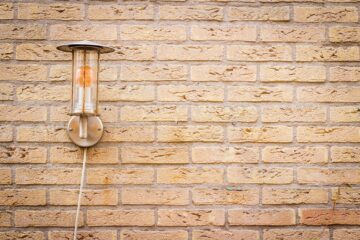You’ve come to the right place if you’re looking for new and exciting ways to paint your walls. In this blog post, we’ll be sharing 6 fantastic techniques that wall painters use to create beautiful and unique results. From stripes and ombré effects to geometric patterns and faux finishes, there’s sure to be something here that will inspire you. So grab your paintbrush, and let’s get started!
Wiping down the walls before painting
Wiping down the walls before painting is vital to ensure that your finished project looks its best. Dirt, dust and grime can interfere with the paint’s ability to properly adhere to the wall, leading to an uneven finish. Wiping down with a damp cloth will help remove any caked-on particles while ridding dust that could be moved around if using a broom or vacuum cleaner. Doing this extra bit of work before beginning any painting project guarantees your walls look their best when complete.
Applying a base coat of paint
Applying a base coat of paint can seem daunting, but it is easily achievable with the proper preparation work. Before reaching for the paint roller, it is essential to remove old or peeling paint from the surface and any dirt that has built up over time. To avoid damaging the wall, start by sanding down any areas with peeling or cracked paint. Then take a damp rag and wipe away any dust and debris. Once your wall is clean and dry, you can begin applying your base coat of primer to get a nice, even finish. After applying one coat of primer, please leave it to completely dry before taking your paintbrush and roller to add colour to your walls! Using these few steps as guidance, you can enjoy beautiful fresh, painted walls in no time.
Using a foam roller to apply paint evenly
paint rollers offer a practical and cost-efficient solution to achieving a perfectly even coat of paint. These tools absorb excess paint while spreading it out so that walls are covered uniformly, eliminating the need for constant brushing, dipping, or reloading of the roller mid-job. It also guarantees a surface with no visible streaks or brushstrokes. To get the best results when using this tool, make sure to pour only a manageable amount of paint onto the roller– apply too much, it could begin running down the wall instead of drying where it needs to be. Ceilings can also be challenging due to their height, so take your time when rolling and involve multiple foam rollers if required. With careful application and practice, you’ll soon enjoy the beautiful and uniform result of using a foam roller for painting needs.
Hanging plastic sheeting over furniture
Hanging plastic sheeting over furniture is an excellent way to protect your favourite pieces from dirt, dust and even pets. It does not require any tools or a lot of time, yet it allows for breathability so that your furniture does not become musty. Plastic sheeting can be hung separately, providing protection for all sides, or you can use one sizeable ubiquitous piece draping all your furniture in the same material. This is a great way to provide ample protection while still allowing you to admire the beauty of your furniture.
Cutting in around edges with a brush
Cutting in edges with a brush is an important skill to master when painting, as it helps ensure clean lines and no brush marks are left in the finished project. It takes plenty of practice and precision, but the results can make all the difference between a mediocre paint job and one that will turn heads. To get started, you’ll need a quality brush with stiff bristles – the best choice is usually a firm, angled-tip (or “sash”) brush. For beginners, cutting in across four feet or less at a time is best; take slow and steady strokes to adjust more quickly if needed. With patience and practice, you’ll be able to achieve bright, quick, even edges!
Applying multiple coats of paint
Painting a wall or surface can add vibrancy to any space. To achieve the best results, applying multiple coats of paint is essential. This technique requires patience, but the result is worth the extra effort. Each coat should be lightly sanded afterwards for a smooth finish before adding new layers of paint. Make sure you give each coat sufficient time to dry and check that previous layers are dehydrated before proceeding with additional coats. Otherwise, the colour or texture could be uneven and won’t look professional. Multiple coats of paint will pay off when you see the difference it makes – your walls will look flawless and refreshed!
Conclusion
Painting your home’s walls is a big job, but it can be surprisingly easy with the proper preparation and tools. Be sure to wipe down the walls, apply a base coat of paint, use a foam roller for even coverage, hang plastic sheeting over furniture, and cut in around the edges with a brush. Apply multiple coats of paint for best results. With these tips in mind, you’ll be painting like a pro in no time!
You want your home to look great, but you don’t have the time or the skills to do it yourself.
It’s hard enough finding the time to do regular maintenance on your home, let alone take on an entire renovation project. And if you’re not experienced in DIY, it can be challenging and risky to try and do it yourself.
All Well Property Services offers a wide range of professional property services that will take care of everything for you – from painting and decorating to bathroom fittings and property renovations. We have years of experience in the industry, so you can rest assured that your project will be completed quickly, safely and to a high standard.


